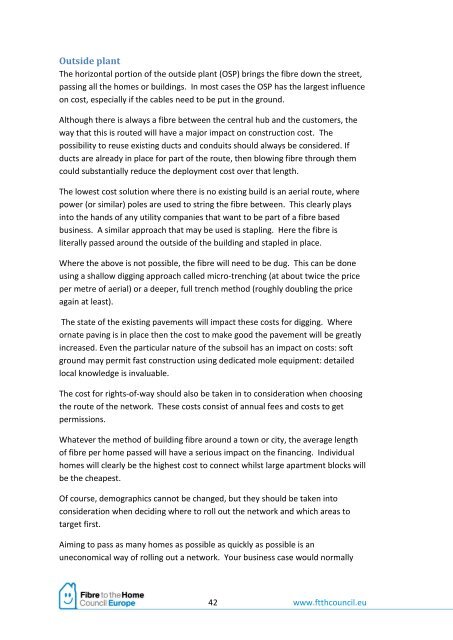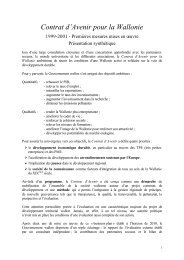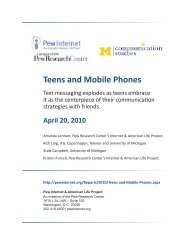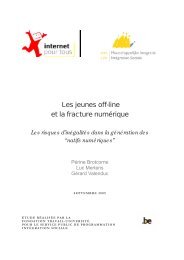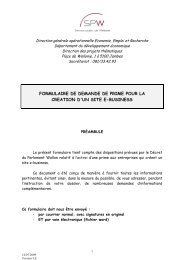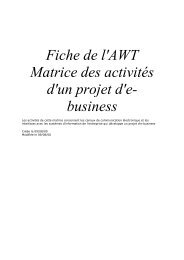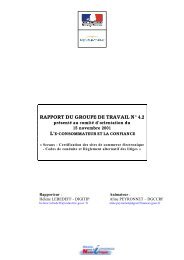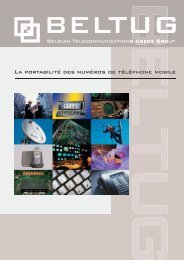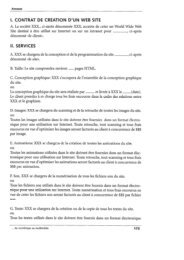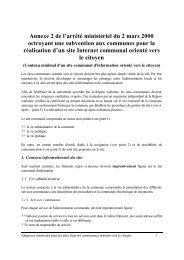You also want an ePaper? Increase the reach of your titles
YUMPU automatically turns print PDFs into web optimized ePapers that Google loves.
Outside plant<br />
The horizontal portion of the outside plant (OSP) brings the fibre down the street,<br />
passing all the homes or buildings. In most cases the OSP has the largest influence<br />
on cost, especially if the cables need to <strong>be</strong> put in the ground.<br />
Although there is always a fibre <strong>be</strong>tween the central hub and the customers, the<br />
way that this is routed will have a major impact on construction cost. The<br />
possibility to reuse existing ducts and conduits should always <strong>be</strong> considered. If<br />
ducts are already in place for part of the route, then blowing fibre through them<br />
could substantially reduce the deployment cost over that length.<br />
The lowest cost solution where there is no existing build is an aerial route, where<br />
power (or similar) poles are used to string the fibre <strong>be</strong>tween. This clearly plays<br />
into the hands of any utility companies that want to <strong>be</strong> part of a fibre based<br />
business. A similar approach that may <strong>be</strong> used is stapling. Here the fibre is<br />
literally passed around the outside of the building and stapled in place.<br />
Where the above is not possible, the fibre will need to <strong>be</strong> dug. This can <strong>be</strong> done<br />
using a shallow digging approach called micro-trenching (at about twice the price<br />
per metre of aerial) or a deeper, full trench method (roughly doubling the price<br />
again at least).<br />
The state of the existing pavements will impact these costs for digging. Where<br />
ornate paving is in place then the cost to make good the pavement will <strong>be</strong> greatly<br />
increased. Even the particular nature of the subsoil has an impact on costs: soft<br />
ground may permit fast construction using dedicated mole equipment: detailed<br />
local knowledge is invaluable.<br />
The cost for rights-of-way should also <strong>be</strong> taken in to consideration when choosing<br />
the route of the network. These costs consist of annual fees and costs to get<br />
permissions.<br />
Whatever the method of building fibre around a town or city, the average length<br />
of fibre per home passed will have a serious impact on the financing. Individual<br />
homes will clearly <strong>be</strong> the highest cost to connect whilst large apartment blocks will<br />
<strong>be</strong> the cheapest.<br />
Of course, demographics cannot <strong>be</strong> changed, but they should <strong>be</strong> taken into<br />
consideration when deciding where to roll out the network and which areas to<br />
target first.<br />
Aiming to pass as many homes as possible as quickly as possible is an<br />
uneconomical way of rolling out a network. Your business case would normally<br />
42 www.ftthcouncil.eu


